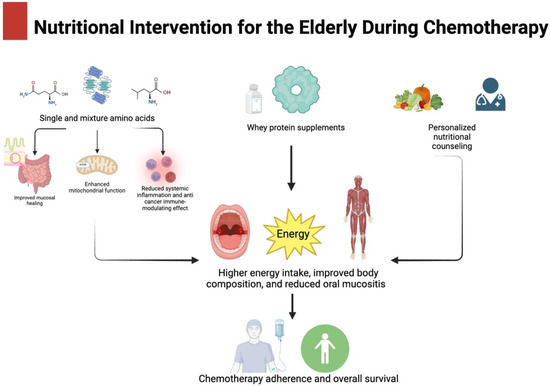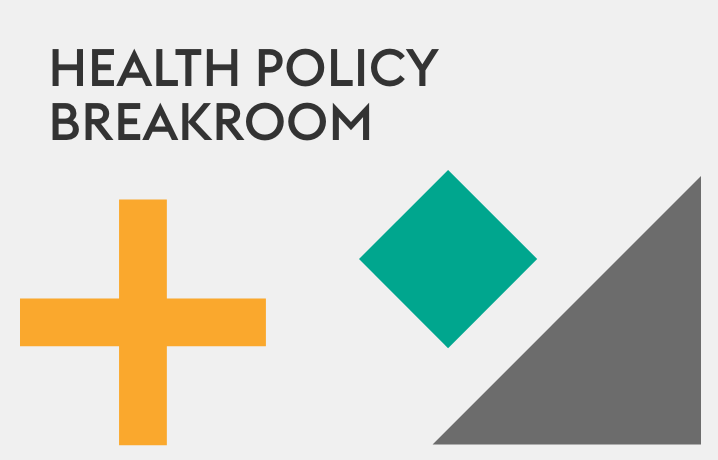Asian Markets Surge as Investors Move Funds from US Equities – Vietnam Briefing

Report on Asian Equity Markets and Sustainable Development Goal (SDG) Alignment
A significant rotation of foreign capital, primarily from United States investors, is fueling a surge in Asian equity markets. This trend is driven by favorable foreign exchange dynamics and strong corporate earnings, with notable implications for several United Nations Sustainable Development Goals (SDGs). The influx of capital into sectors aligned with sustainable development indicates a growing investor focus on long-term value and responsible growth.
Economic Drivers and Alignment with SDG 8
Capital Flows and Currency Performance
Recent market dynamics have seen investors redirecting capital towards Asian economies, contributing to progress on SDG 8 (Decent Work and Economic Growth). This shift is underpinned by two key factors:
- Favorable Currency Exchange: A perceived weakening of the US dollar has enhanced the attractiveness of Asian currencies. Since February, several currencies have shown notable appreciation, including the Chinese yuan (2.4%), the Singapore dollar (3.6%), and the Indian rupee (2.3%). This currency strength creates a favorable environment for foreign investment, stimulating economic activity.
- Sustained Foreign Investment: Asian markets have attracted substantial foreign equity inflows. In June, key markets including Taiwan, South Korea, India, and Vietnam collectively drew US$6.02 billion, following a US$10.65 billion inflow in May. This sustained investment is crucial for financing economic expansion and job creation across the region.
Investment in Sustainable Industries (SDG 7, 9, 11, 12, 13)
Corporate Performance in High-Impact Sectors
The capital rotation is not indiscriminate; it is increasingly directed towards companies at the forefront of sustainable innovation, directly supporting a range of SDGs. This trend highlights how market performance is becoming intertwined with progress on global sustainability targets.
- Clean Energy and Climate Action (SDG 7 & SDG 13): The performance of companies like CATL, a leading manufacturer of electric vehicle (EV) batteries, exemplifies this trend. With its stock increasing over 8% in the past month and over 50% in the last year, investor confidence is clearly high. This investment directly fuels the transition to cleaner energy and supports global climate action by enabling the growth of low-carbon transportation.
- Industry, Innovation, and Infrastructure (SDG 9): The growth of technology giants such as Tencent, which has seen a 33% stock increase in six months, points to robust investment in Asia’s innovation ecosystem. This capital supports the development of resilient infrastructure and fosters industries crucial for a modern, sustainable economy.
- Sustainable Cities and Communities (SDG 11): Investment in sectors like EVs and advanced manufacturing contributes to the development of more sustainable urban environments by providing cleaner transport and technology solutions.
Policy, Trade, and Partnerships for the Goals (SDG 12 & SDG 17)
Government Initiatives and Global Trade Dynamics
National policies and international trade relations are shaping the investment landscape, with clear connections to sustainable consumption and global partnerships.
Promoting Responsible Consumption (SDG 12)
Government-led initiatives are creating new markets for sustainable goods. A prime example is the Chinese government’s policy to subsidize consumers who replace old appliances with more energy-efficient models. This program directly advances SDG 12 (Responsible Consumption and Production) by:
- Incentivizing the adoption of energy-saving technologies.
- Reducing overall energy demand and environmental impact.
- Stimulating domestic consumption in a sustainable manner.
International Cooperation and Trade (SDG 17)
The current global trade environment, marked by US tariff policies, is inadvertently fostering stronger regional cooperation in Asia. This dynamic could strengthen partnerships for sustainable development as Asian nations collaborate more closely on trade and investment. While global trade tensions create uncertainty, they also present an opportunity for regional blocs to lead in creating stable, predictable, and sustainable economic frameworks, reinforcing SDG 17 (Partnerships for the Goals).
Investment Outlook and Conclusion
The ongoing influx of foreign capital into Asian markets reflects more than a simple search for higher returns; it signals a strategic alignment of investment with sectors critical to achieving the Sustainable Development Goals. The strong performance of companies in clean energy, technology, and advanced manufacturing demonstrates that sustainable business models are increasingly seen as financially viable and attractive.
Looking ahead, the interplay between international trade policies, regional cooperation, and national sustainability initiatives will continue to shape global capital flows. Investors are likely to remain focused on Asian markets that demonstrate both economic resilience and a clear commitment to sustainable growth, ensuring that financial investment increasingly serves as a catalyst for progress on the SDGs.
Analysis of Sustainable Development Goals (SDGs) in the Article
1. Which SDGs are addressed or connected to the issues highlighted in the article?
The article, while primarily focused on financial markets and investment trends, touches upon several issues that connect directly and indirectly to the Sustainable Development Goals. The following SDGs are relevant:
- SDG 7: Affordable and Clean Energy: This is addressed through the mention of companies specializing in EV batteries and a government initiative promoting energy-efficient appliances.
- SDG 8: Decent Work and Economic Growth: The entire article is centered on economic growth, discussing foreign investment, market performance, company earnings, and the flow of capital into Asian economies.
- SDG 9: Industry, Innovation, and Infrastructure: The article highlights growth in “high-value sectors such as technology and advanced manufacturing,” specifically mentioning companies involved in technological innovation like CATL (EV batteries) and Tencent.
- SDG 12: Responsible Consumption and Production: This goal is connected through the description of a Chinese government policy that encourages consumers to replace old appliances with more energy-efficient models, promoting sustainable consumption patterns.
- SDG 17: Partnerships for the Goals: The article extensively discusses global financial partnerships, including foreign equity inflows, international trade relations, the impact of tariffs, and the potential for stronger regional cooperation in Asia.
2. What specific targets under those SDGs can be identified based on the article’s content?
Based on the content, the following specific SDG targets can be identified:
- Target 7.3: By 2030, double the global rate of improvement in energy efficiency.
- Explanation: The article mentions a “trade-in program that offers subsidies to consumers who replace old appliances with more energy-efficient models.” This policy directly aims to improve energy efficiency at the consumer level.
- Target 8.1: Sustain per capita economic growth in accordance with national circumstances and, in particular, at least 7 per cent gross domestic product growth per annum in the least developed countries.
- Explanation: The article’s focus on surging equity markets, rising company earnings (e.g., CATL and Tencent), and significant foreign equity inflows (“US$6.02 billion worth of foreign equity inflows in June”) are all indicators of economic activity aimed at sustaining growth.
- Target 9.2: Promote inclusive and sustainable industrialization and, by 2030, significantly raise industry’s share of employment and gross domestic product, in line with national circumstances, and double its share in least developed countries.
- Explanation: The article points to a major factor “boosting the investing trend in Asian markets is the growth in high-value sectors such as technology and advanced manufacturing.” This signifies a shift towards more advanced and potentially sustainable industrial sectors.
- Target 12.c: Rationalize inefficient fossil-fuel subsidies that encourage wasteful consumption…
- Explanation: While not about fossil fuels directly, the principle of using subsidies to influence consumption is present. The article states the Chinese government launched a “trade-in program that offers subsidies to consumers who replace old appliances with more energy-efficient models,” which is a direct policy intervention to encourage responsible consumption.
- Target 17.3: Mobilize additional financial resources for developing countries from multiple sources.
- Explanation: The article quantifies the movement of capital, stating, “Asia has attracted US$6.02 billion worth of foreign equity inflows in June… across Taiwan, South Korea, India, Thailand, Indonesia, Vietnam, and the Philippines.” This is a direct example of financial resource mobilization from foreign investors into developing and emerging Asian economies.
3. Are there any indicators mentioned or implied in the article that can be used to measure progress towards the identified targets?
Yes, the article mentions several quantitative and qualitative indicators that can be used to measure progress:
- Foreign Equity Inflows: The article provides specific figures, such as “US$6.02 billion” in June and “US$10.65 billion” in May. This is a direct indicator for Target 17.3, measuring financial flows.
- Stock Market Index Performance: The text notes that the “MSCI Asia ex-Japan Index rose about 17 percent in dollar terms.” This serves as an indicator of overall economic health and investor confidence, relevant to SDG 8.
- Company Earnings and Growth: Specific company performance is cited, such as “CATL has recorded an over 8 percent increase in the past month” and “Tencent is up 33 percent in the last 6 months.” This measures economic productivity and the health of key industrial sectors (SDG 8 and SDG 9).
- Currency Strength: The article details currency appreciation, for example, “the Chinese yuan strengthened approximately 2.4 percent,” and the “Singapore dollar and Indian rupee advanced 3.6 and 2.3 percent, respectively.” This is an indicator of economic stability and attractiveness for investment (SDG 8).
- Implementation of Government Policies: The mention of the “trade-in program that offers subsidies” is a qualitative indicator of government action towards promoting energy efficiency and sustainable consumption (SDG 7 and SDG 12).
- Growth in Key Sectors: The reference to “growth in high-value sectors such as technology and advanced manufacturing” is an indicator of industrial upgrading and innovation (SDG 9).
4. Summary Table of SDGs, Targets, and Indicators
| SDGs | Targets | Indicators Identified in the Article |
|---|---|---|
| SDG 7: Affordable and Clean Energy | 7.3: Double the global rate of improvement in energy efficiency. | Implementation of a government trade-in program offering subsidies for energy-efficient models. |
| SDG 8: Decent Work and Economic Growth | 8.1: Sustain per capita economic growth. | Foreign equity inflows (US$6.02 billion); Stock market index growth (MSCI Asia ex-Japan up 17%); Company earnings growth (Tencent up 33%). |
| SDG 9: Industry, Innovation, and Infrastructure | 9.2: Promote inclusive and sustainable industrialization. | Investment and growth in high-value sectors like technology (Tencent) and advanced manufacturing (CATL – EV batteries). |
| SDG 12: Responsible Consumption and Production | 12.c: Rationalize inefficient fossil-fuel subsidies that encourage wasteful consumption. | A government subsidy program to encourage consumers to replace old appliances with energy-efficient ones, influencing consumption patterns. |
| SDG 17: Partnerships for the Goals | 17.3: Mobilize additional financial resources for developing countries. | Quantified foreign equity inflows into Asian countries (e.g., US$6.02 billion in June). |
Source: vietnam-briefing.com

What is Your Reaction?
 Like
0
Like
0
 Dislike
0
Dislike
0
 Love
0
Love
0
 Funny
0
Funny
0
 Angry
0
Angry
0
 Sad
0
Sad
0
 Wow
0
Wow
0













































































